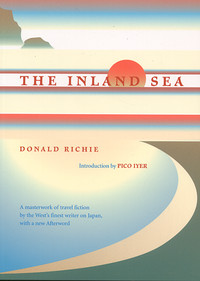
“The Japanese think of the City in the way that Englishmen used to think of Mighty London. It is either one or the other. Rice paddies or the Ginza.” (p35)
I am reading the wonderful author Donald Richie’s The Inland Sea, first published in 1971. Richie is the ultimate American expat in Japan, who stayed from the start of the Occupation until today, and this is a classic travel book focused on Seto Nai Kai (the Inland Sea), which I recently visited.
This passage struck me because Ginza Farm, which I have visited for Tokyo Green Space, overcomes the division between city and country by bringing a rice paddy to Ginza, Tokyo’s most celebrated commercial district full of De Beers, Cartier and now of course Uniqlo flagship stores.
Richie’s The Inland Sea also reminds me of the recently deceased French anthropologist Claude Levi-Strauss’ Tristes Tropiques, which chronicled an Amazon on the verge of extinction. In a similar voyage by boat, Richie bemoans the new highways and lure of the city that threaten the fishing economy and general isolation of these islands and peoples. What used to be called “salvage anthropology” clashes with contemporary feelings by focusing on purity and what is about to be lost. This antique attitude also portrays the writer as both the “first” and last foreigner to capture a vanishing culture, creating a false sense of importance for the individual writer.
Despite this unease, it is hard not to enjoy Richie’s beautiful writing, his insights on insider and outsider culture, and his only partly closeted attraction to Japan. And I do not doubt the gulf that once existed between city and country, which makes the current urban interest in rural life and agriculture all the more indicative of profound social and environmental change.
On a related topic, I read this week in the New York Times that Korea, which is generally more accepting of national diversity, is having difficulties integrating children of mixed marriages. Most mixed children are the progeny of Korean farmers and their Chinese, Filipino and Thai wives. Partly the social question is of race, but also of class and city versus country.
I was struck that Korea shares Japan’s rural abandonment, and seems ahead of Japan in responding through immigration. Perhaps Japan, too, will first open its doors to immigrants willing to live in its rural areas now inhabited almost exclusively by the elderly. Despite Japan’s xenophobia, immigrants as care-givers and farmers seem more likely than the techno fantasy of robots: more cost-effective as workers and more human in terms of care and culture.